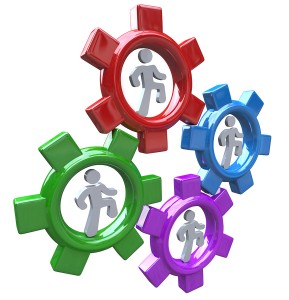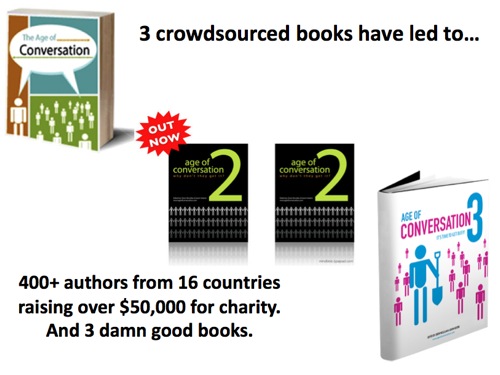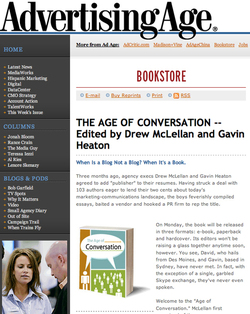The power of we
October 15, 2012
 Today is Blog Action Day*. What does that mean? It means that thousands of bloggers from over 108 countries will come together today to blog on a single topic. Ironically — this year’s topic is the power of we.
Today is Blog Action Day*. What does that mean? It means that thousands of bloggers from over 108 countries will come together today to blog on a single topic. Ironically — this year’s topic is the power of we.
The essence of Blog Action Day, really.
Each blogger shares his/her own slant on the theme…with the hope that together we can raise the consciousness and the conversation on this one topic.
If you’ve been reading this blog for any length of time, you know I am a huge proponent of the power of we. I believe it should be a marketing staple — in every company’s plan/vision for how to connect with potential customers, employees and their community.
Here are some examples that I can point to that every business could modify/borrow and apply to their own marketing efforts:
Crowdsourcing: Why create it all yourself when you can work together and do something far greater than any one individual could accomplish? Together with Gavin Heaton, I have co-edited 3 editions of the Age of Conversation book series.
We brought hundreds of marketing bloggers together and asked each of them to write a single chapter in the books. Together — we created three books that look at how the digital age is changing marketing and our world. We also promoted the book together — raising over $40,000 for charities around the world.
Could you create a crowdsourcing project with your best customers? Or invite prospects to join in too.
Give your audience a voice: Once or twice a year, I survey the readers of this blog and ask them what they’d like to know more about. They literally help me create my editorial calendar. By creating content that lines up with their needs — I not only provide more value but I am also more likely to retain them as readers. (And potential clients)
Many businesses are afraid to invite customer opinion because they might hear bad things. I think that’s crazy. Far better to hear about it and have a chance to either change it or explain it — than not to know until you lose that customer. If you’re not surveying your best customers every year — you need to. If you aren’t sure how to do it — reach out to me and I’ll tell you how we can help.
Partner with someone with different skills/talents: Throughout my career, I’ve worked at huge (Young & Rubicam) agencies and small (my own — Mclellan Marketing Group) and realize that one of the best aspects of being in a small agency is that we can’t do everything in house. So we have to seek experts to partner with. That means we are always delivering the highest value to our clients and we’re getting smarter by hanging out with them too.
Identify an area where your business is a little light or your expertise isn’t as deep. Then go find a partner whose skill sets and values compliment what you’re already doing. You don’t look like you have a deficiency — you look like you are well connected and are committed to bringing excellence to your clients.
I’m curious — how do you employ the power of we in your business?
*Founded in 2007, Blog Action Day brings together bloggers from different countries, interests and languages to blog about one important global topic on the same day. Past topics have included water, climate change, poverty and food with thousands of blogs, big and small, taking part.
More









